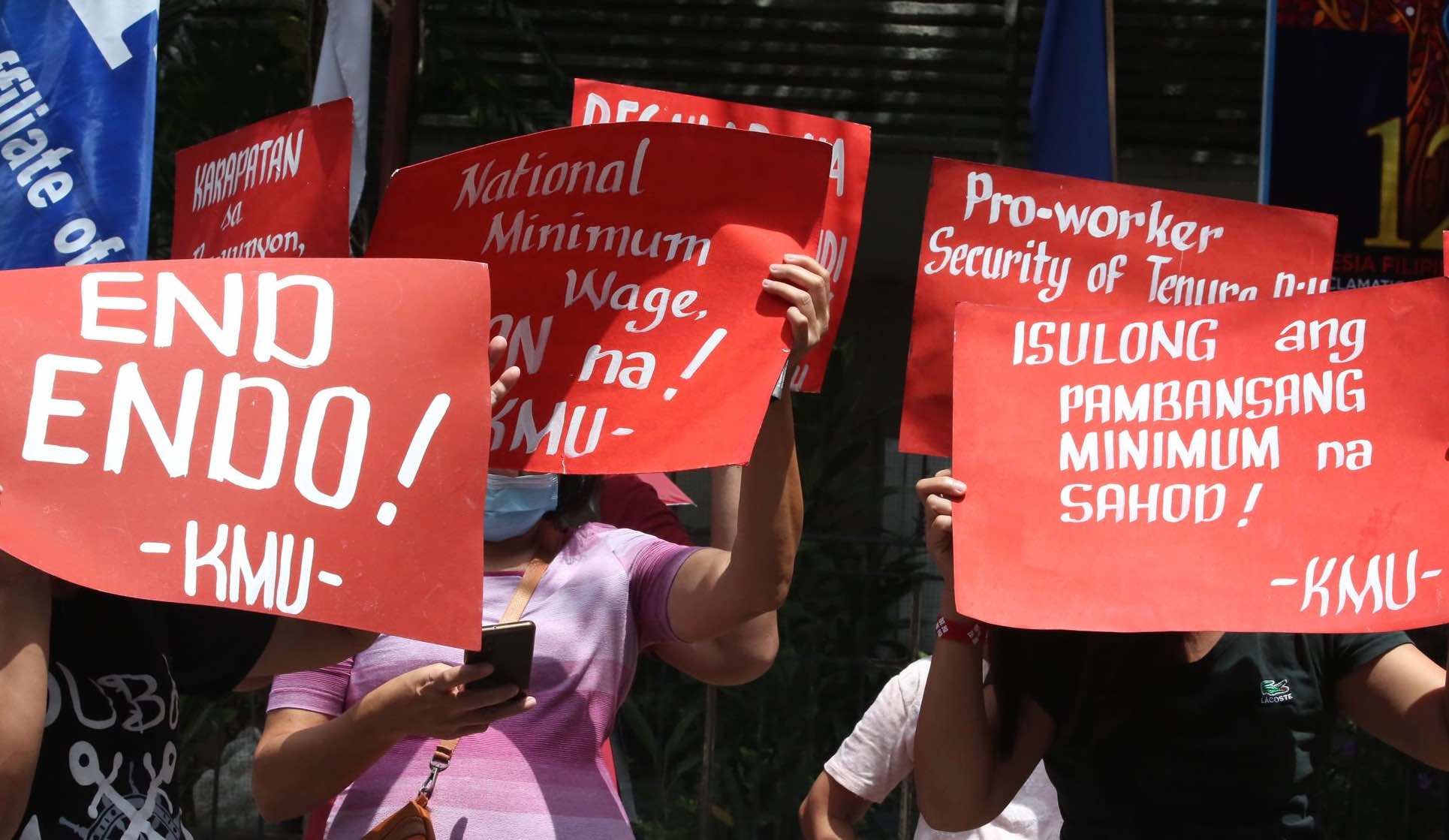[OPINION] Ending ENDO requires more than just passing a law
President Ferdinand "Bongbong" Marcos Jr. vowed to end contractual labor, but he has yet to live up to that promise. Labor groups slammed him in his first 100 days in office for not even mentioning the issue of contractualization—and now halfway into his presidency, as the country awaits his fourth SONA, the issue remains as pressing as ever.
Small and large businesses in the Philippines employ thousands of workers in illegal short-term contracts, typically lasting only six months. After the period ends, workers are rehired with a new contract, and their employers skirt their legal obligation to provide benefits for tenured employees. This means that workers, often minimum wage earners, do not receive healthcare, paid leave, and job security. Colloquially referred to as endo, short for "end-of-contract," this practice exploits a loophole in the Labor Code of the Philippines, and leaves 27-45% of Filipino workers without labor protection. Endo must end, but terminating it effectively will require a combination of law, advocacy, and operational support.
That’s because an entrenched network of third-party labor contractors enables this practice. As middlemen, these contractors hire workers, place them in client companies, and rotate them to other firms when the contract ends. Before former president Rodrigo Duterte vetoed it in 2019, the Senate urgently and unanimously approved the Security of Tenure and End of Endo Act, which sought to terminate labor contractors. Duterte reasoned that the bill unfairly prohibits all third-party contracting, even legitimate ones that do not infringe on employees’ rights. On his campaign trail for the 2022 elections, Marcos promised to continue "fine-tuning" the anti-endo bill.
The first step needed to address endo will be amending our laws. Whether through the vetoed bill or not, these amendments to the labor code must be passed to close loopholes that allow short-term contracting to persist. If, as business groups argue, the laws already exist and are effective, then such labor practices would not be this rampant. Amending our laws is the first step. To fully eradicate the practice and protect worker rights, however, we must go beyond that.
To make lasting change, we need to work across sectors rather than leaving the job solely to the black-and-white hold of the law.
A sweeping ban rarely works without proper sticks and carrots. As seen in the labor code’s unsuccessful implementation, businesses are wont to find ways to minimize costs. In an ideal world, the moral argument for doing good should be enough for businesses to do right. In reality, companies likely remain incentivized to maximize returns. If not coupled with efforts that speak to industry, interventions at complete odds with profit will be met with resistance and circumvention. An effective solution would consider business interests and propose measures that protect employees and support company growth.
Doing right by employees should not be antithetical to a company’s financial bottom line. In fact, research from MIT Sloan School of Management shows that providing employees with good jobs—those with security of tenure, living wage, and benefits—can lead to optimal operations and increased profits, if implemented well. Operations suffer when employees are replaced and retrained bi-annually. Businesses also spend unnecessary costs from rehiring and retraining—such that can be redirected towards employee benefits.
When businesses deny workers their duly-earned benefits, employees are left stressed and insecure, leading to poor performance. In the end, businesses lose out on the financial benefits of having an engaged, high-performing workforce. This cycle is particularly prevalent in restaurants and retail chains that rely significantly on frontline workers to provide quality customer service. Businesses cannot expect poorly treated employees to treat customers excellently. Similarly, businesses cannot expect new, barely trained employees to perform at the level of tenured employees.
Breaking this vicious cycle requires upfront investment to cover increased labor costs, but it pays off in better employee performance, operational excellence, and quality customer service. Multiple US companies, including retail giants Costco and Walmart, have shown positive business results from raising wages and offering benefits.

While passing law amendments is a necessary first step, supporting businesses through the post-endo transition is a close second. Organizational change is difficult, especially for such a monumental labor transformation. Businesses cannot be expected to do the work alone without support, else they will resist and fail. The Department of Labor and Employment must engage closely with chief executives and advocate for the benefits of abandoning endo. Better yet, the department should partner with industry coalitions and labor groups to develop programs managing the transition. To make lasting change, we need to work across sectors rather than leaving the job solely to the black-and-white hold of the law.
For these changes to happen, we need to change our mindset about endo. More than just a business issue, endo reflects a lack of safety net. While the Social Security System offers unemployment benefits, its eligibility requirements are restrictive. Only workers who are involuntarily terminated and have paid 36 monthly contributions are eligible for unemployment pay. Given frequent job rotations, such monthly contributions are difficult for endo workers to sustain. Beyond SSS, there are no other accessible unemployment insurance programs. To truly protect labor rights, the government must provide comprehensive support for workers experiencing unemployment. Cash benefits, alternative upskilling, and recruiting programs are a good start.
Endo is an entrenched cycle of abuse. It’s time to end it, and to do so, we need a systems-wide approach that closes law loopholes, supports organizational transition, and provides alternative safety nets for thousands of workers.
Disclaimer: The views expressed in this article are those of the author and do not reflect the opinions of PhilSTAR L!fe, its parent company and affiliates, or its staff.


